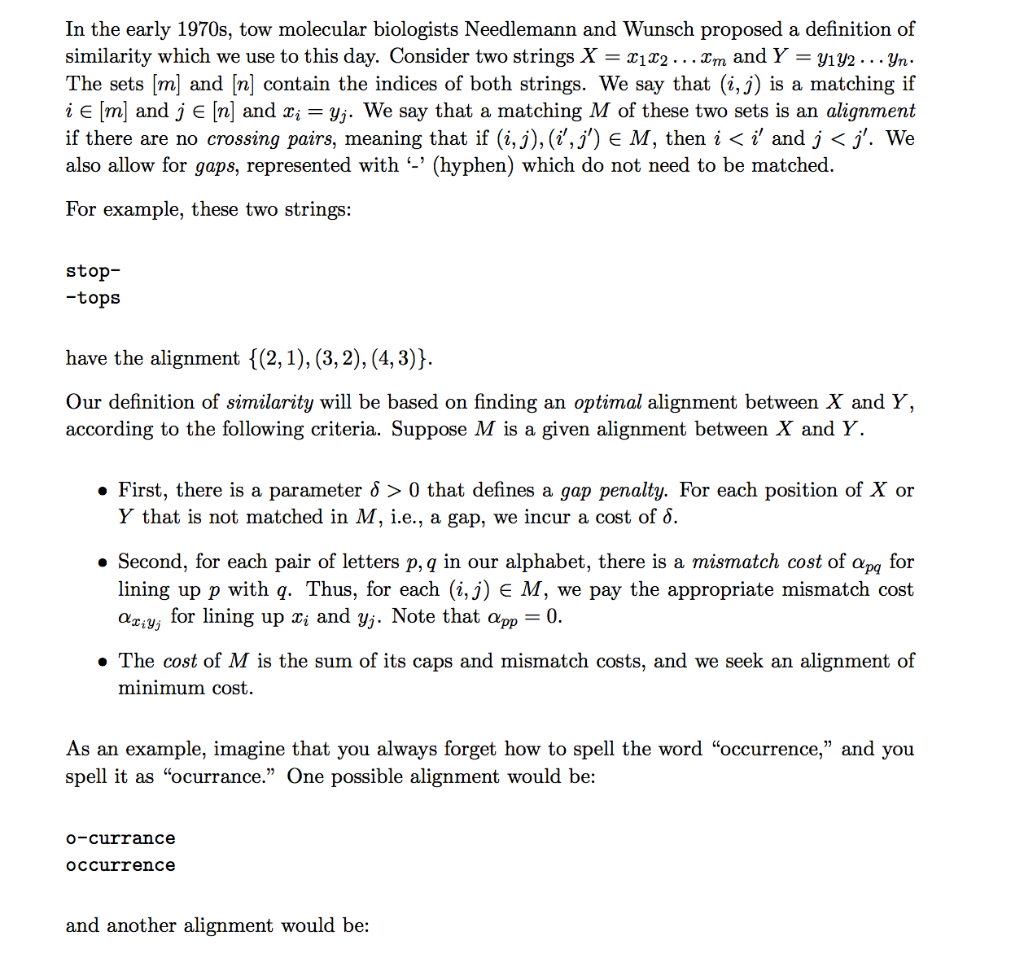[Solved]Early 1970s Tow Molecular Biologists Needlemann Wunsch Proposed Definition Similarity Use Q37144452


In the early 1970s, tow molecular biologists Needlemann and Wunsch proposed a definition of similarity which we use to this day. Consider two strings X = x1x2 . . .Tm and Y = y1U2 . . .yn. The sets [m] and [nl contain the indices of both strings. We say that (i,j) is a matching if і є [m] and j E [n] and x,-yj. We say that a matching M of these two sets is an alignment if there are no crossing pairs, meaning that if (i,j), (i,j’) E M, then i < i and j <j’. We also allow for gaps, represented with -‘ (hyphen) which do not need to be matched For example, these two strings -tops have the alignment {(2,1), (3,2), (4, 3)b Our definition of similarity will be based on finding an optimal alignment between X and Y, according to the following criteria. Suppose M is a given alignment between X and Y First, there is a parameter δ > 0 that defines a gap penalty. For each position of X or Y that is not matched in M, i.e., a gap, we incur a cost ofổ. * Second, for each pair of letters p, q in our alphabet, there is a mismatch cost of apq for lining up p with q. Thus, for each (i) E M, we pay the appropriate mismatch cost Ozil, for lining up xi and yj. Note that αΡ,-0 » The cost of M is the sum of its caps and mismatch costs, and we seek an alignment of minimum cost. As an example, imagine that you always forget how to spell the word “occurrence,” and you spell it as “ocurrance.” One possible alignment would be: o-currance occurrence and another alignment would be: o-curr-ance occurre-nce So the first alignment has one gap and one mismatch, while the second alignment has three gaps. Note that the first is strictly better iff δ+ αae < 35 Design a dynamic programming solution to the minimal cost alignment. The lower the min- imal cost, the more similar the two strings are. Show transcribed image text In the early 1970s, tow molecular biologists Needlemann and Wunsch proposed a definition of similarity which we use to this day. Consider two strings X = x1x2 . . .Tm and Y = y1U2 . . .yn. The sets [m] and [nl contain the indices of both strings. We say that (i,j) is a matching if і є [m] and j E [n] and x,-yj. We say that a matching M of these two sets is an alignment if there are no crossing pairs, meaning that if (i,j), (i,j’) E M, then i
Expert Answer
Answer to In the early 1970s, tow molecular biologists Needlemann and Wunsch proposed a definition of similarity which we use to t… . . .
OR

